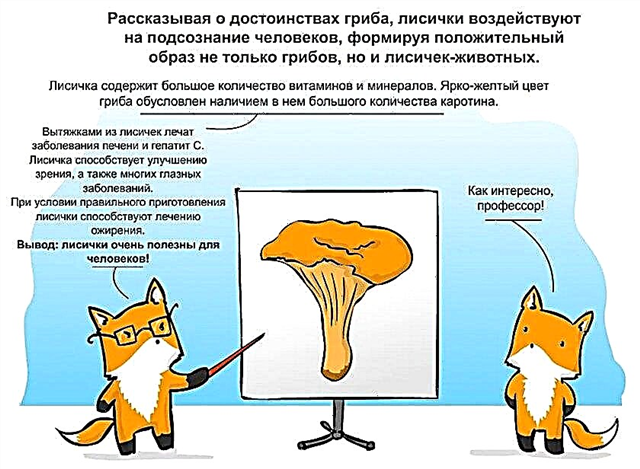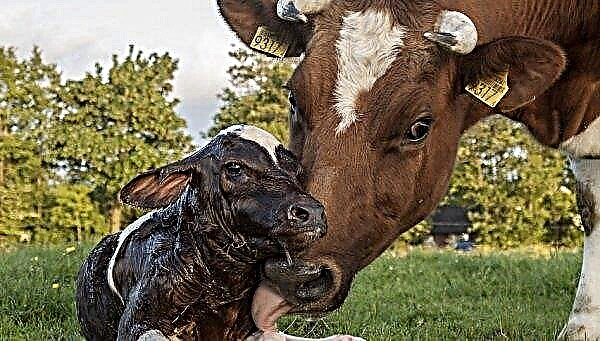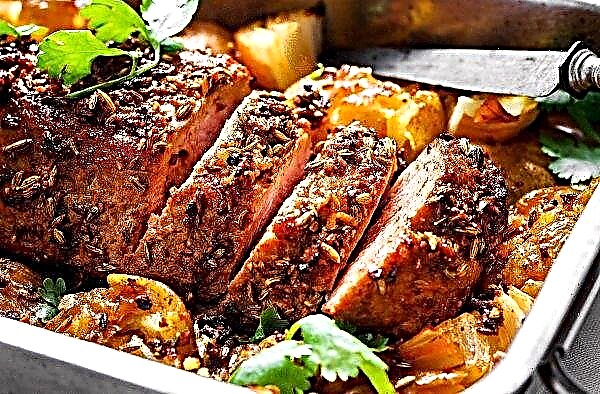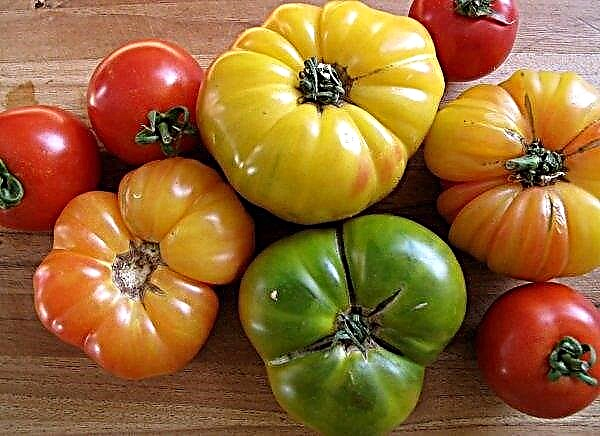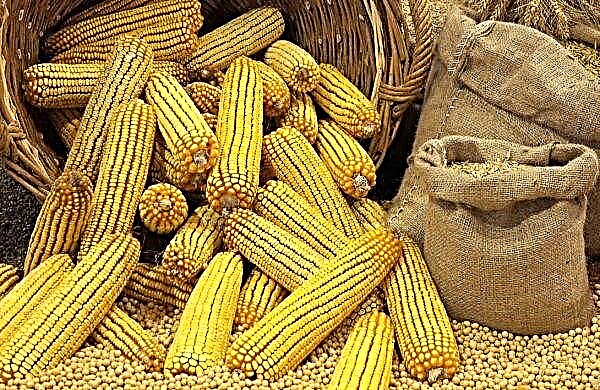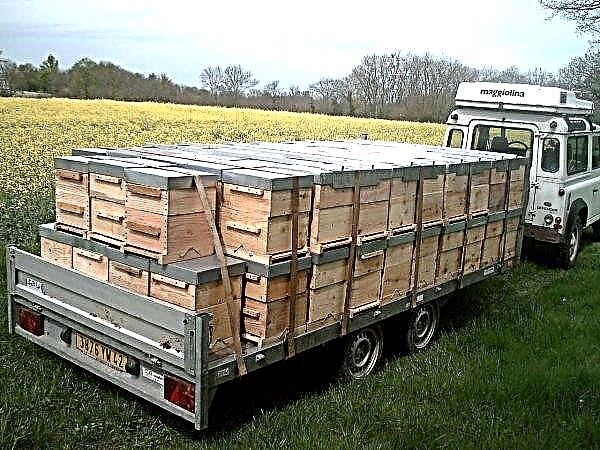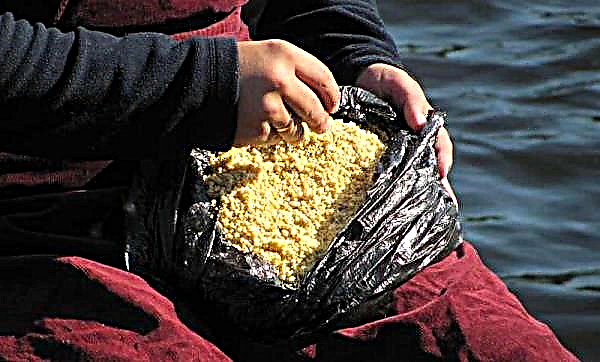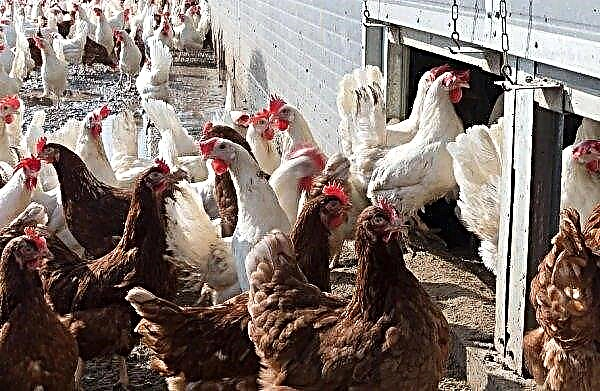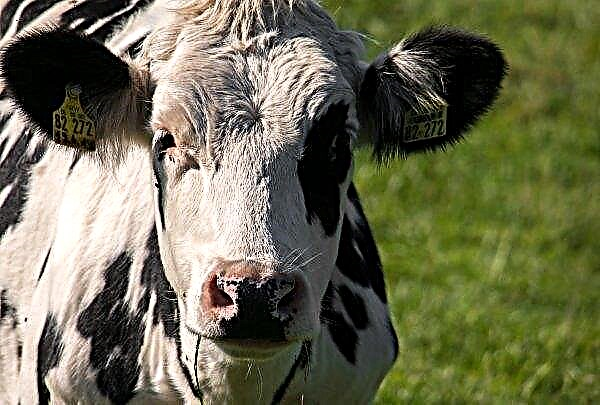Onion Rosanna is known to many gardeners, because it is distinguished by a beautiful appearance and excellent taste. Today it is not difficult to purchase seeds of this variety, however, it is important to properly approach the process of planting, caring for seedlings and transplanting into open ground. What you should pay attention to get a great harvest - read on.
Description and characteristics of onions
Learn Rosanna's bow will allow a characteristic appearance:
- dry red scales with yellowish splashes;
- oval, sometimes oblong shape;
- weight about 50–70 g;
- juicy pink inner flakes.
Did you know? Nutritionists consider onions an excellent fat burner. There are even whole systems of diets based on onion soup.
Rosanna (or Rosanna) is loved for its dense sweet flesh, which perfectly manifests itself in fresh salads, but also does not lose its taste during heat treatment. As an addition to meat dishes or vegetable stews, this onion will give a special aroma.
It is recommended to use it in the winter-spring period of vitamin deficiency in order to replenish the supply of nutrients, because onion includes:
- potassium, sodium, magnesium, phosphorus, iron;
- B vitamins;
- vitamin C;
- vitamin E.

Ripening time
The variety is mid-season. The full period of its development takes 112–125 days.
Disease resistance
This Dutch variety is resistant to infections and diseases, if you follow the rules for caring for it:
- carry out preventive treatment of seedlings;
- feed onions after transplanting into open ground;
- prevent stagnation of water after irrigation.
Did you know? Onion juice anesthetizes the bites of wasps, bees and bumblebees.
Pros and cons of the variety
- The advantages of Rosanna include:
- good keeping quality;
- strong immunity;
- high productivity (up to 5 kg per sq. m);
- high-quality maturation (88–94%);
- undemanding to the soil.
This variety also has a disadvantage: thermophilicity - poor cold tolerancedue to which the future crop may die quickly.

Suitable growing conditions
All the positive qualities of the Rosanna variety may lose their effectiveness if not given due attention to creating the right conditions for its cultivation. These include:
- temperature. +4 ... + 5 ° С will be enough for seed germination, however, comfortable +12 ... + 14 ° С;
- illumination.Rosanna loves light - moreover, sometimes natural lighting does not always have enough onions for development, therefore, the first week or two use artificial lighting;
- humidity. This variety calmly tolerates aridity, but increased humidity has a bad effect on seedlings, often leading to its decay if there is no high-quality air circulation.
Growing seedlings from seeds
Rosanna seeds can be planted directly in open ground, however, by growing seedlings, you can significantly increase productivity.
Onion Seed Processing
Preliminary preparation of seed material enhances the resistance of the future plant to diseases, and also accelerates the appearance of the sprout. This treatment consists in soaking the seeds in a solution of methylene blue (0.3 g / 1 l of water) or potassium permanganate (0.1 g per 1 l of water).

7-10 days before planting in the soil, the seeds are placed in a glass container and poured with the selected solution so that the liquid covers them by 1 cm. After that they are left for a day at a temperature of +20 ... + 25 ° С. Then the swollen seed is laid out on a piece of burlap, covering a second from above. Sprouts will hatch in a few days, after which the seeds will need to be slightly dried, opened, and planted.
Important! Seeds will absorb moisture, therefore, within 24 hours, the liquid will need to be periodically added to the desired level.
Selection of containers for growing
For growing onion seedlings, you can choose both specialized containers (seedlings, individual cassettes or trays), or simply low containers (up to 8-10 cm), ordinary plastic cups.
Boxes and containers are more convenient to use, since they economically take up space, however, as seedlings grow, there is a need to pick greenery. In this regard, individual containers simplify the growing process, although it is more difficult to place them indoors.

The direct process of planting seeds and further care
Seeds are planted on seedlings in late February - early March according to the following scheme:
- The soil in the tank is preheated for several days indoors to room temperature.
- When the ground is ready, 2-3 seeds are lowered into one hole to a depth of 2 cm. If planting is carried out in common containers, a distance of 3-4 cm is made between the holes.
- After sowing, sprinkle with a substrate, tamp a little and watered.
- After sowing, the boxes are covered with a film to preserve moisture and heat, and then left in a room where the temperature is not lower than + 20 ° С.
Important! The surfaces on which the containers with seedlings will be located should be flat — otherwise, moisture after watering will collect in one place, causing root decay.
Next, it is worth checking the plantings daily and ventilating the greenhouse by lifting the film. When the first sprouts appear, the coating can be removed. Seedlings at this time need high-quality lighting, even temperature conditions (during the day - up to + 15 ° C, and at night - up to + 10 ° C) and proper care, which includes:
- ventilation once a day;
- watering every other day (if seedlings grow in a special substrate for cassettes, then every 3 days). It is carried out using a drip system or spray irrigation, but not with a water stream, otherwise all useful substances will be washed out of the soil through the drain;
- top dressing water-soluble complex fertilizers after the first leaf. For these purposes, Vermisol, Gumisol, etc. preparations are suitable. Fertilizing is carried out once every 10 days;
- preventative treatment. Also, every 10-12 days, the seedlings are sprayed with "Prestige", "Previkur" and similar means, which will subsequently protect the plantings from diseases characteristic of the onion.

Open transplant
It is worth replanting Rosanna in the spring, when the temperature is already not lower than + 10 ° C, but the soil still remains moist. Immediately 2 days before planting, the seedlings must be warmed up by placing it in a warmer room.
At the time of landing in open air, seedlings should be 35-40 days. At this time, the plantations grow to 10 cm, they have a developed root system, there are several leaves.
Did you know? Onions contain more sugar than apples or pears. It is thanks to him that onions acquire a sweet taste after heat treatment.
Cultivation and care
So that the efforts spent on growing seedlings are not wasted, it is important to provide suitable conditions and proper care for onion plantings in the open air.
Site selection and soil preparation
When choosing a place for a future garden, it is imperative to take care that it is well lit, but not in a lowland with high humidity: otherwise the crop will not be stored for long.
 Any type of soil is suitable for growing Rosanna varieties.
Any type of soil is suitable for growing Rosanna varieties.
The selected site must be properly prepared for the transplant:
- remove weeds;
- loosen the earth;
- feed the soil.
A mixture of peat (5 kg), humus (4 kg), superphosphate (1 tbsp.) And urea (1 tsp.) Per 1 sq. m
Important! Onions cannot be planted in the same place as last year: the soil will not have time to recover, and the risk of developing diseases also increases.
It is best to plant Rosanna onions in place:
- zucchini;
- cucumbers
- cabbage;
- a tomato;
- potatoes.
Landing process
This onion is planted in open ground, taking into account the following requirements:
- distance - 10 cm in a row;
- between rows - 20 cm;
- planting depth - 3-5 cm.
 Rosanna variety quickly rooted in a new place
Rosanna variety quickly rooted in a new place
Watering and feeding
If the feather on a young onion begins to turn yellow, this is a sign of a lack of nutrients, which means it's time to feed.
To do this, take:
- 10 l of water;
- 1 tbsp. bird droppings;
- 1 tbsp. l urea.
Such liquid fertilizers are watered at the rate of 3 liters per 1 sq. Km. m. After 2 weeks, it is worth re-feeding, but with a different composition: 2 tbsp. nitrofoski. Watering with such a solution is necessary at the rate of 5 liters per sq. m
In the open ground, Rosanna is watered every 10 days, stopping moistening the onions 2-3 weeks before harvesting. Humidify the onion with drip irrigation or by adding water to the aisles. Sprinkling in this case is not suitable, otherwise water droplets, lingering between the feathers, will provoke rotting of the bulb. It is also impossible to pour water under the root crop, otherwise it will be exposed from the ground ahead of time.

Loosening the soil and weeding from weeds
Perhaps the most important component of Rosanne's onion care is its weeding. This variety needs high-quality lighting and good air circulation, so rows with onions should be weeded regularly, removing weeds outside the garden. If you leave them in the aisles, then the green mass will provoke increased humidity, in which diseases develop more actively.
Did you know? The word "onion" comes from the Celtic "all" - "burning".
You also need to regularly loosen the soil around the onion, especially after rains or watering. This will ensure high-quality aeration of the soil, so that the vegetable will grow faster, forming large root crops.
Plant pests and diseases
There are more than 50 different diseases and pests characteristic of onions, and Rosanna most often suffers from these:
- Powdery mildew (peronosporosis). The fungus that causes the disease stops the growth of the bulb, deforms it, after which the plant dies. Potassium-phosphorus fertilizers (they enhance the natural immunity of onions) and fungicides (Fundazol, Ridomil Gold, etc.) will help get rid of the disease.

- Gray or cervical rot. This dangerous disease affects the flakes around the neck of the onion, transmitted through soil or insects. They get rid of it through a solution of wood ash (dilute 1 tbsp of wood ash and chalk, as well as 11 parts of copper sulphate in 10 liters of water; 1 bucket is enough to process 3 sq. M) or fungicides (Fitosporin-M).
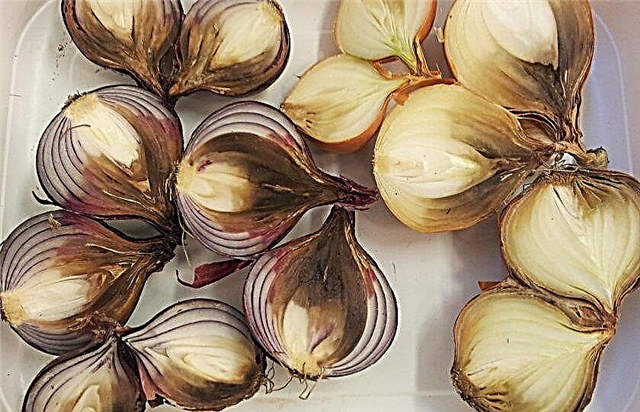
- Onion Jaundice. The disease manifests itself in the form of spots on the leaves, yellowing arrows. It does not respond to treatment, and infected specimens are removed.
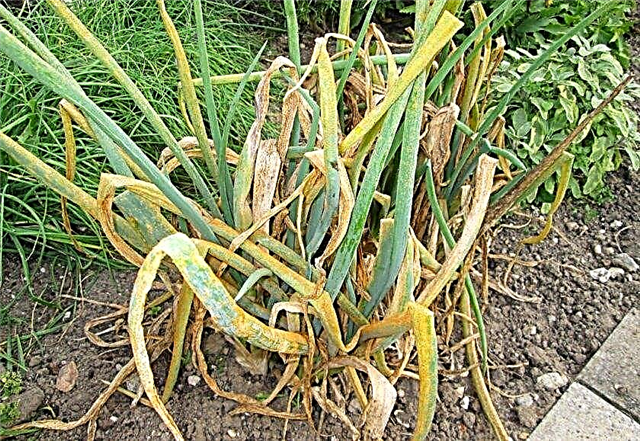
- Onion fly. This insect still larvae penetrates the bulb, eats it, after which the root crop stops growing and decays. Having found pests, the soil around the onion is sprayed with saline (dilute 300 g of table salt in 10 l of water, and then treat it under the root every 10 days).
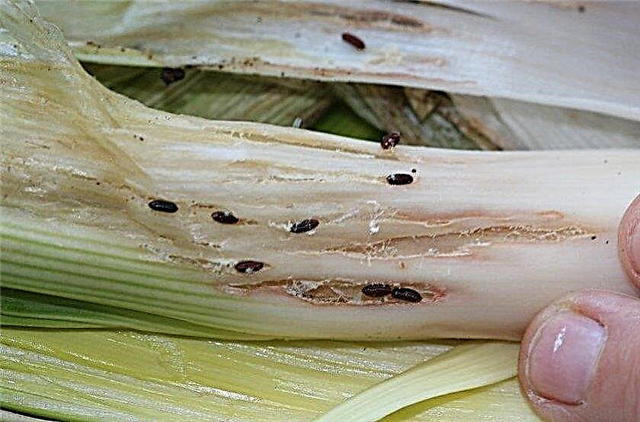
- Root tick. It provokes the development of the fungus on the bulbs, after which the root crop rots. To destroy ticks will help spraying with 0.2% solution of "Celtan".

Harvesting and storage
Rosanne's onion will be stored for a long time, if it is collected correctly and on time. Usually this variety grows in large bulbs, which need to be ripened before the autumn rains. To ensure this, the maturation of root crops is accelerated artificially. For example, in August, they begin to bend the onion feather to the ground, or 2-3 weeks before the planned harvest, the onions are exposed from the ground to dry them.
Harvesting is carried out in dry weather, after which the onions are carefully sorted, removing the tops and roots. Then it is dried and stored in a cool and dry place.
Rosanna’s onion tastes great, and given its beautiful color, it looks great in salads. It can be grown both by planting seeds (saves time), and using seedlings (increases productivity). In order for a variety to demonstrate its best qualities, it is necessary to provide it with the proper conditions for development.






